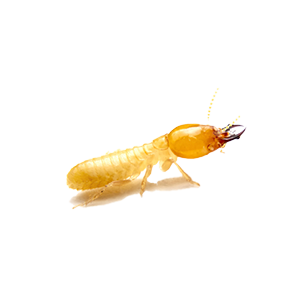The Wonderful World of Spider Webs

You watch the light glint from thread to thread as you adjust your position. Your hand sweats as you clutch the dust mop—poised and ready to strike. As your eyes dart over the configuration, you check to see if your “little friend” is home.
Alright, the spider is gone—MOVE, MOVE, MOVE!
Right before you demolish the web that has been growing in the corner of the living room, you can’t help but notice how beautiful it looks. The silkiness and intricacies of the design…it must have taken the spider forever to make!
Alright, back to business.
In one fell swoop the web is gone, but your interest is piqued! How do spiders create webs and what are they really used for?
If you’re craving more information on webs, you’ve come to the right place! AAA Exterminating is a pest control company in Indianapolis, Indiana who has seen a web or two. Read on for interesting facts!
What Are Webs Made From?

You know that beautiful silk dress you bought the other day…What if we told you spiders produce silk to create webs too?
Spider’s have special glands within their bodies, located mostly on the abdomen, that produce silk. When a spider goes to create a web, or dangle precariously over your head, they produce this silk through a process called “spinning.”
Spinning involves the spider using his hind legs to pull silk from an external structure on its body called the spineret. A nozzle-like shape is connected to the end of the spineret from which a single thread of silk comes. Spiders are then able to take this thread and create webs or bind up prey waiting to be eaten.
Webs Are Used for Protection?
Just as our homes protect us from the elements and intruders, a spider’s web can do the same.
Spiders strategically spin webs over the entrance to their dwelling to stop predators, like centipedes, from entering! These webs can also keep some of the elements out of their lairs and allow their dwellings to remain better hidden.
If You Build It, They Will Come
Perhaps the most known reason for a spider to create a web is to attract and catch prey. Remember how you were momentarily mesmerized by the way the web gleamed in the sunlight? Well moths feel the same way!
By creating shiny, bright webs, spiders are able to attract:
- Bees
- Flies
- Moths
- Dragonflies
- Grasshoppers
- And more
It’s Caught! Now What?

A spider does an excellent job with attracting prey, but what do they do once that prey is caught?
Let’s talk silk again!
Once an insect is trapped within a web, the spider will creep close to inspect their hostage. If they deem the insect is edible, they will wrap it in the same type of silk that they use to build their webs—this prevents the prey from escaping.
Once the insect has been bound by silk, a spider can easily carry it back to their lair to eat later.
Bon Voyage!
Perhaps the weirdest thing a “web,” or the silk that a spider produces, can do is carry the spider from location to location!
It’s called ballooning.
Spiders can spin silk from their abdomen and catch the wind to escape prey and look for new areas. Spiders have been found up to 2½ miles in the air! With the ability to ride the wind and float to new areas, spiders can have a better chance of finding new resources and leaving competitors behind.
Okay, Spider Webs Are Pretty Cool, Just Not in My House…
Now that you have a better understanding of spider webs and how they function, you can appreciate them more!
But where there are webs, there are spiders…
Looks like you need a pest control company in Indianapolis, Indiana.
If you are seeing an abundance of webs in your home, you could have a possible spider infestation—Let AAA Exterminating help! With more than 65 years of pest control experience, AAA can help barricade your home and exterminate existing pests. Get back to enjoying webs where they were intended to be—outside! Call (317) 773-3797 to get started.








